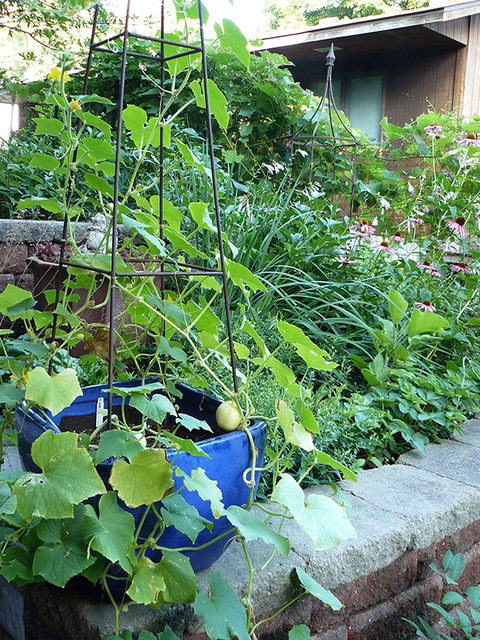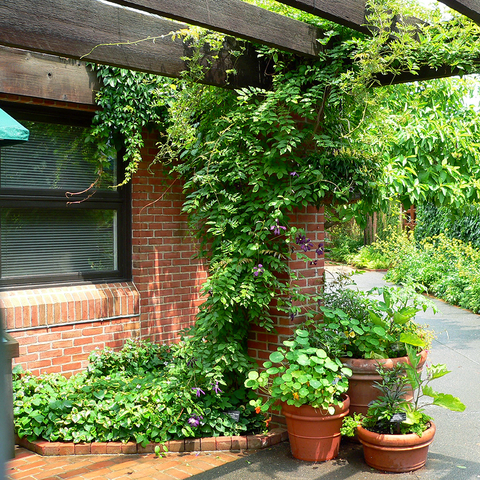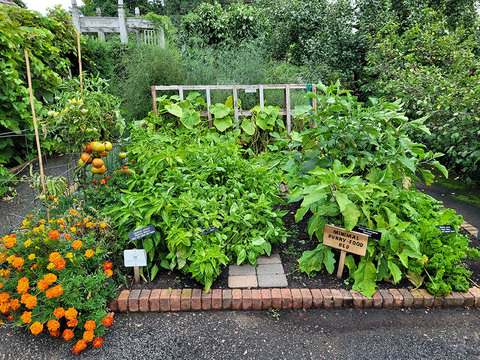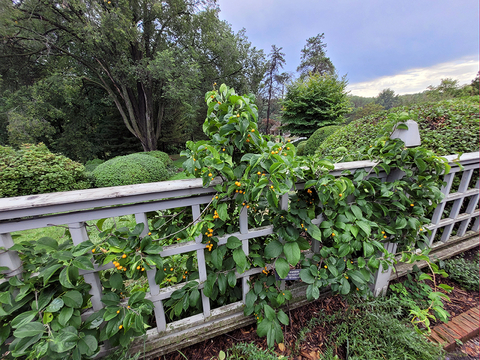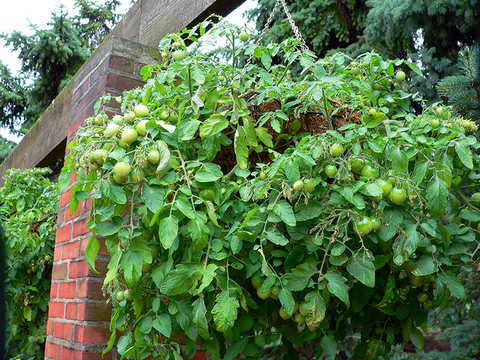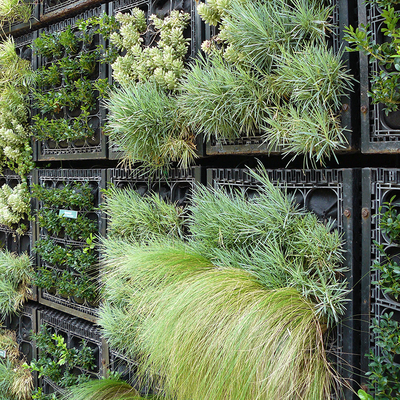Space is at a premium in my garden, so I am always looking for vertical growing techniques and ideas. Public gardens, garden tours, and tapping into my own imagination — and stuff in our garage — are good ways of creating space to grow plants of all shapes and sizes. And, sometimes, you just need to accommodate a lot of plants in a small space.
Here are some inspirations to grow vertically.
Raise your space with an obelisk in a pot
I am a sucker for a great pot, particularly the deep, rich blue that is reminiscent of a Mediterranean garden. Expand the space by inserting a vertical element like an obelisk or even just three 6-foot garden poles bound at the top. Cut off the ends of a wire coat hanger to make your own staples to hold the obelisk in place.
This triangular form is great for annual vines like Thunbergia, cucumbers, tiny pumpkins and mini watermelons.
Hardy vines soften vertical elements
Pergolas, pillars and posts are important for shade (the pergolas) and as support for roofs. They can also be stark against the landscape unless you soften their geometric, man-made forms with plants. Hardy vines (those that are perennial) can do this nicely and help blend the structure into the landscape. Extra tip: Locate containers at the base of a post or pillar to hide the base of the vine.
Provide support for annual food crops
Peas and pole beans are annual vining crops that need temporary structure to wrap around as they grow up.
Use poles with netting, twine, wire or a combination to create a seasonal trellis that can easily be removed at the end of the growing season.
Rotating crops decreases the likelihood of plant disease.
Stronger is better: Wood fence sections
American bittersweet is a strong, vigorous vine. If not sufficiently supported, it can take down a trellis in no time. I once had bittersweet so strong, it pulled the trellis right down to the ground. Take the time to build or buy a strong trellis or grow these plants on something tough like a chain link fence.
Fence sections can also be attractive and supportive in vegetable gardens for annual vines like cucumbers, squash and melons.
Raise your garden to new heights: Hanging baskets
Limited on space? Try growing plants you usually grow in pots in hanging baskets. Hanging baskets can create the feeling of enclosure and outdoor ceilings.
Look for plants bred for containers like compact tomatoes and berry plants. Be sure to water baskets daily.
Here are some container tomato varieties (notice their names usually allude to compactness, patios or containers): Patio Sunshine, Garden Gem, Tidy Treats, Veranda Red Hybrid, Tiny Tim, and Red Robin.
Create a growing accent wall
A wall of plants can be striking — and a spacesaver.
While probably a higher investment initially, a plant wall can create the feeling of being surrounded by lush plants even on the smallest apartment balcony.
There are many structures you can buy to create a plant wall ranging from more complicated grid systems filled with soil to hanging bags and plastic pots in rows to just hanging containers off a railing.


